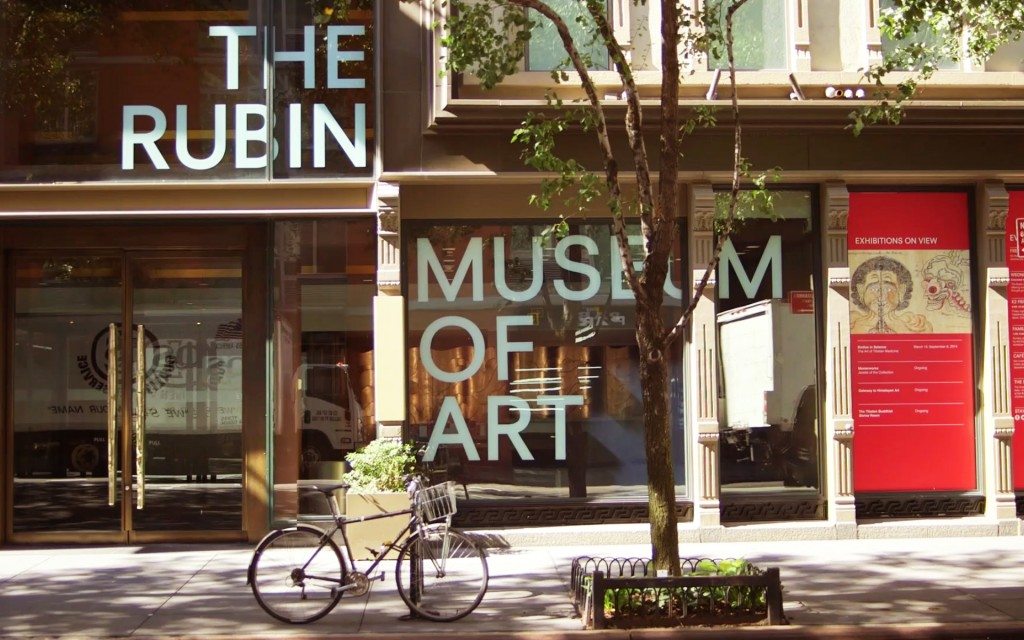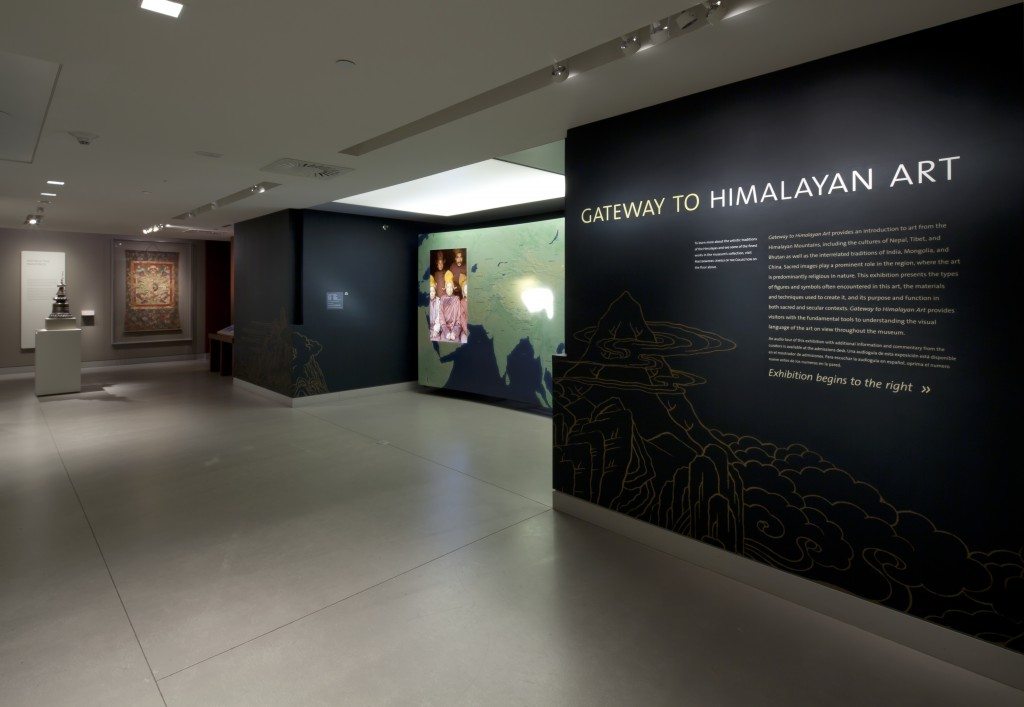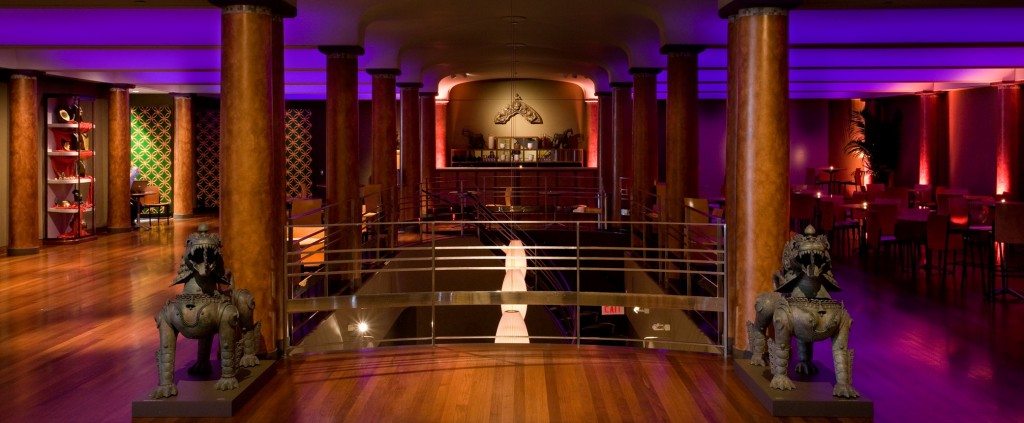On Friday evenings from 6:00-10:00 PM, the Rubin Museum of Art in New York City becomes a lively social venue with a full bar, series of special public lectures or tours, and complimentary gallery admission. In January, Ancient History Encyclopedia’s Communications Director, James Blake Wiener, partook in the museum’s end of the week festivities and learned a curious thing or two about Tibetan art along the way.
 On my last night in New York City and still jetlagged from two weeks of business meetings in the UK and Ireland, I decided to start my weekend early and attend the K2 Friday Night at the Rubin Museum’s Café Serai. On Friday evenings from 6:00-10:00 PM, the café transforms itself into the swanky K2 Lounge with a full bar, live music, film screenings or book signings, and complimentary gallery admission. Upon my arrival around 6:30 PM, I was surprised to see that the Rubin’s “lounge” was already packed with an eclectic crowd of New Yorkers! Many were hurriedly eating pan-Asian inspired salads and tapas in order to make the Friday night tours or special programs of their choice. I ordered a “Bodhi Martini,” a delicious mix of fig-infused vodka and lemon syrup, sat down, and began analyzing the museum’s floor plan.
On my last night in New York City and still jetlagged from two weeks of business meetings in the UK and Ireland, I decided to start my weekend early and attend the K2 Friday Night at the Rubin Museum’s Café Serai. On Friday evenings from 6:00-10:00 PM, the café transforms itself into the swanky K2 Lounge with a full bar, live music, film screenings or book signings, and complimentary gallery admission. Upon my arrival around 6:30 PM, I was surprised to see that the Rubin’s “lounge” was already packed with an eclectic crowd of New Yorkers! Many were hurriedly eating pan-Asian inspired salads and tapas in order to make the Friday night tours or special programs of their choice. I ordered a “Bodhi Martini,” a delicious mix of fig-infused vodka and lemon syrup, sat down, and began analyzing the museum’s floor plan.
The Rubin Museum of Art, situated in Manhattan’s gallery-centric Chelsea neighborhood, celebrates the art, culture, and philosophies of the Himalayas, India, and neighboring regions (Mongolia, China, Pakistan, Afghanistan, Bhutan, and Nepal). With an impressive permanent collection and special rotating exhibitions that emphasize the region’s interconnectivity to the world at large, the Rubin Museum makes a pleasant excursion on any sojourn to New York City. Two of the Rubin Museum’s six gallery floors are devoted to works from its permanent collection of more than 2,500 objects: Gateway to Himalayan Art and The Tibetan Buddhist Shrine Room (on the second floor) and Masterworks: Jewels of the Collection (on the third floor). As I had just been in London and spent an entire day at the Victoria and Albert Museum viewing ornamental pieces, I choose to join the 7:00 PM “Introduction to Tibetan Art” tour in the Gateway to Himalaya Art gallery.
Mr. Evan Goodman, our young and lively museum guide, met a large group of us in the museum lobby before proceeding to take us up to upstairs to begin our “primer.” When viewing Buddhist art from the Himalayas — especially the arts of Tibet — one has to familiarize oneself with the various figures that appear in Buddhist iconography: the Buddhas or “enlightened beings” with their exaggerated earlobes and cranial protuberance; male or female Bodhisattvas who are adorned with crowns and exquisite jewelry and help humankind attain enlightenment; human beings, including Buddhist teachers (lamas), tantric masters (mahasiddhas), and the disciples (arhats) of the historical Buddha; wrathful deities who are instantly recognizable by their fangs, garlands of severed heads, and flaming hair; tantric deities who personify enlightened qualities and are mentioned in religious text called “tantras”; and female deities who also embody enlightened qualities and can be either wrathful or benevolent in temperament.
Aside from appearance, Evan pointed out the various postures and gestures that are of importance to Tibetan Art. While many of the postures are recognizable to Westerners — like the “lotus posture” which is associated with meditation and the “prayer gesture” — others were less clear from an initial glance. I was particularly drawn to those sculptures or images with figures in the “royal ease posture.” This relaxed pose is commonly associated with royalty and regal leisure and reminded me of similar poses I’ve observed in Indian, Thai, and Balinese art.
Color is of the utmost importance, too. In Tibetan Buddhism, six colors represent both a state of mind and a natural element: blue, black, white, red, green, and yellow. Evan shared that he had drawn the very casual connection between the fact that you can find stones of every color in Tibet except purple and that you see every color at its full vibrancy in Tibetan painting except purple. (I think Evan is on to something as I didn’t see more saturated shades of purple.) As the tour continued, Evan imparted anecdotes on the symbolism, iconography, and ritual significance of the objects we saw. He also discussed the ways in which Tibetan art might be studied in terms of influences, which undoubtedly contributed to its development over the centuries; Chinese, Nepalese, and Indian patterns and styles are all discernible. Subtle atavistic influences from  Central Asia — Mongolia in particular — are also noticeable, given the close religious ties between the Mongolian and Tibetan people.
Central Asia — Mongolia in particular — are also noticeable, given the close religious ties between the Mongolian and Tibetan people.
While I thoroughly enjoyed exploring the gallery’s main sections — “Figures and Symbols,” “Materials and Techniques,” and “Purpose and Function” — and the superb collection, the highlight of my Friday night was undoubtedly the Tibetan Buddhist Shrine Room. This section of the gallery has nearly 200 objects from the Rubin Museum’s own collection. The Shrine Room contains sculptures of buddhas and bodhistattvas, scroll paintings (thangka), portraits of sages and teachers, in addition to ritual entities like votive bowls, prayer beads, and bells. It’s truly a lovely thing to behold and contemplate, and I couldn’t help but walk away with a sense of how meticulously the Rubin Museum had reconstructed the various elements of traditional Tibetan architecture.
What is most striking about the Rubin Museum is the wide range of works on view; here, one can find art ranging from the ancient to the contemporary, plastic to digital. With their wide range of programs and events, there’s truly something for everyone. The presentation of the art, geography, history, and culture of Himalayan Asia at the Rubin Museum leaves the visitor enthralled, excited, and enlightened.
Nota Bene: A “Looking Guide,” filled with tips for easy recognition of the Buddhist figures and symbols throughout the Museum, is available as a brochure. I recommend looking at it while visiting the Gateway to Himalaya Art gallery. You can also plan your visit to the Museum with a daily or thematic itinerary, including featured works of art, events, and experiences, by clicking here.
Images lent to the Ancient History Encyclopedia by the Rubin Museum of Art have been done so as a courtesy for the purposes of this interview and are copyrighted. (Copyright © Rubin Museum of Art.) Unauthorized reproduction prohibited. A heartfelt thank you is extended to Mr. Daniel Hernández Lyon, Marketing & Communications at the Rubin Museum of Art, and Mr. Evan Goodman for helping facilitate Mr. James Blake Wiener’s visit to the museum. Special thanks is also extended to Ms. Karen Barrett-Wilt, who assisted in the editorial process. The views presented here are not necessarily those of the Ancient History Encyclopedia. All rights reserved. © AHE 2015. Please contact us for rights to republication.

